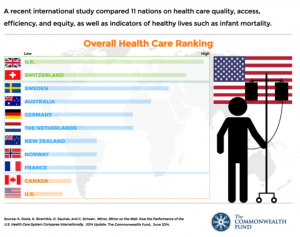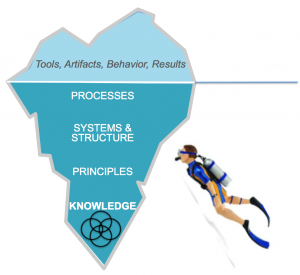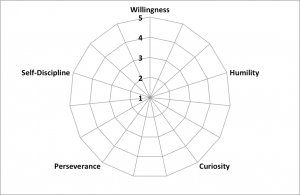Transformation Begins With The Individual
March is my “anniversary month” at the ThedaCare Center For Healthcare Value. I officially started (as a volunteer) this month in 2010 – five years ago. As we prepare for our 6th Annual Lean Healthcare Transformation Summit in June , I would like to share some observations and personal reflections from the past five years.
 Is healthcare improving? I have seen some indication of improvement – in pockets, but not as a system. Costs are still over-running revenues and the quality of care in United States (as well as Canada) is not that great as compared to other countries.
Is healthcare improving? I have seen some indication of improvement – in pockets, but not as a system. Costs are still over-running revenues and the quality of care in United States (as well as Canada) is not that great as compared to other countries.
What is the problem? Many healthcare organizations are trying to learn about what is being called “lean,” and although many tools, methods and events have been introduced (and they have yielded some initial improvements), the improved results do not sustain themselves. I think of tools, methods, events, results, and behaviors as being “on the surface” (using the iceberg metaphor below). These are the things you can see and observe. What you can’t see directly is the way that people think. That’s under the surface.
 There seems to be a belief that healthcare can merely copy what other industries have done, but I don’t think we know what to copy. In my opinion, the true causes of the problem can be traced back to the prevailing style of management, which comes directly from the way we think – our core beliefs under the surface. Here are some specifics:
There seems to be a belief that healthcare can merely copy what other industries have done, but I don’t think we know what to copy. In my opinion, the true causes of the problem can be traced back to the prevailing style of management, which comes directly from the way we think – our core beliefs under the surface. Here are some specifics:
- The best way to manage and improve an organization is to divide it into parts and manage the parts.
- It makes sense to delegate responsibility for improvement by hiring a VP of Lean (or VP of Quality, or both).
- The best way to improve results is to give people (those who manage the parts) a target and hold them accountable for hitting the target.
- The best way to motivate people is to reward those who perform well (hit or exceed their targets), and punish (or let go) those who don’t. It’s easy, just look at the numbers. Make it an annual ritual and document the conversation in everyone’s personnel file.
- The best way to achieve quality is to inspect and react to every measurable defect, find and remove the root cause.
- Why reinvent the wheel? The best way to obtain new ideas is to benchmark against other companies and copy and use the methods found. (Even if you call it a “gemba visit,” it can still be an attempt to copy and paste solutions without understanding the thinking behind the methods.)
- In order to have a great company, the best way is to hire the smartest people based on GPA, performance evaluations and competencies.
- The best way to accomplish goals is to add more strategies (and measures) when you come across problems and challenges.
- The best way to reduce cost and speed up operations is invest in computers, automation and gadgets.
We learned these beliefs by what we were taught (in school and on the job), how we were taught, and how we were treated. It’s not our fault that these ideas are in our heads, but it is our fault if we don’t replace these these beliefs with different principles.
 The impact of using outdated and incorrect principles is illustrated in this diagram (courtesy of Institute For Enterprise Excellence). The impact of the consequences of using these principles varies depending upon your position in the hierarchy of an organizaton. The strongest negative impact comes from the beliefs of those at the top of the hierarchy (the Board and the C-Suite). But no matter where you are in an organization, you can have an impact (positive or negative) on systems, behaviors, and results.
The impact of using outdated and incorrect principles is illustrated in this diagram (courtesy of Institute For Enterprise Excellence). The impact of the consequences of using these principles varies depending upon your position in the hierarchy of an organizaton. The strongest negative impact comes from the beliefs of those at the top of the hierarchy (the Board and the C-Suite). But no matter where you are in an organization, you can have an impact (positive or negative) on systems, behaviors, and results.
What are the correct principles? Here are some suggestions to replace the nine that were listed above:
- See your organization as a system and work toward optimizing that system for all stakeholders.
- Top management cannot delegate the responsibility for quality or for improvement.
- Improved desired results that add value to the customer (in healthcare, that’s the patient). Improve results through ideal behaviors driven from guiding principles and design and redesign of systems. Learn how to adjust systems with the best tools.
- Understand and leverage the intrinsic motivation that everyone is born with, and avoid the use of extrinsic motivation.
- Build quality (as defined by a customer) into every process, avoid passing defects on to the next step of the process.
- When you learn of a new method, process or tool, avoid the tendency to merely copy. Try to understand the principles behind the systems and where the tool fits. Do not expect similar results if you try the method in your organization. Approach the experiment using the scientific method (PDSA).
- Create a better company by improving the interactions between people and helping people to develop to their potential.
- Guide the efforts of everyone in the organization toward a few true north goals. Avoid the tendency to add additional strategies which will only crush and confuse the people who are trying to add value to the customer.
- Accelerating the rate of improvement comes from a better understanding and application of the system of profound knowledge. There is no substitute for knowledge.
One of my first areas of responsibility at the the Center was to help develop and organize a method to help Healthcare Value Network member organizations to understand their current state of their lean journey, and to identify what the next level of maturity would look like. In order to do this work, I have been working with individuals from the Network to design and test a model for scoring the maturity of various systems on a 5-point scale.
 I recently saw something that Karl Hoover (one of the faculty at the Center) used at a meeting we hosted for Network CEOs that was based on our assessment model. He modified it for use as a self-reflection instrument which he calls the “Senior Leader Behavioral Self-Assessment.” (Download here.)
I recently saw something that Karl Hoover (one of the faculty at the Center) used at a meeting we hosted for Network CEOs that was based on our assessment model. He modified it for use as a self-reflection instrument which he calls the “Senior Leader Behavioral Self-Assessment.” (Download here.)
The descriptors around the periphery of the chart come from the article “A Management, Leadership, and Board Road Map to Transforming Care for Patients,” written by Dr. John Toussaint which was published in the Frontiers of Health Services Management.
Participants were asked to reflect, rate, and then discuss where they thought they were on a scale of maturity for the attributes of:
Leading with humility, including admitting that we don’t have all the answers and that we need to learn, ask for, and act on feedback.
Willingness to let go of previous beliefs and learn new beliefs.
Self-discipline to develop new beliefs and new habits.
Perseverance to continue on the path of personal transformation – to not give up or give in.
Exhibit true curiosity about how things work, including people and interactions between people and the systems that affect people.
The scale for the instrument was as follows for each attribute:
Level 1: Rare, Undeveloped, Indifferent
Level 2: Irregular, Experimental, Apparent
Level 3: Frequent, Predictable, Moderate
Level 4: Consistent, Stable, Persistent
Level 5: Uniform, Mature, Tenacious
I think this is a useful instrument and exercise for anyone in any organization. There also seems to be another belief that unless the person at the top of the organization changes the way he or she thinks and acts, there is nothing that can be done. I think we have to challenge that belief. We are all in charge of something, whether we have people reporting to us or not. We are responsible for processes and systems, and we work in collaboration with others. We are responsible to ourselves and each other to try to do better.
I always come back to the advice from Dr. W. Edwards Deming:
“The first step is transformation of the individual. This transformation is discontinuous. It comes from understanding of the system of profound knowledge. The individual, transformed, will perceive new meaning to his life, to events, to numbers, to interactions between people. Once the individual understands the system of profound knowledge, he will apply its principles in every kind of relationship with other people. He will have a basis for judgment of his own decisions and for transformation of the organizations that he belongs to. The individual, once transformed, will:
Set an example;
Be a good listener, but will not compromise;
Continually teach other people; and
Help people to pull away from their current practice and beliefs and move into the new philosophy without a feeling of guilt about the past.”
Let me propose an experiment. Go to this link to obtain a copy of the self-assessment instrument and rate yourself. Then, give a blank instrument to three friends and ask them to give you honest feedback by rating you on each attribute. Compare your self-assessment to the outside view provided by your friends. Is there a difference? If yes, do something about it. That, I believe, is personal transformation.
Without that first step, I believe, all of this other activity (tools, methods, events, focus on results, huddles, huddle boards, 5S, standard work, best efforts, hard work, and exhortations) will result in zero improvement and our healthcare system will continue to produce poor quality at a high cost. You can tell me about your application of this instrument (anonymously) by taking this short survey. I’ll report out the results of the experiment in a future blog post.
Mike Stoecklein
Director, Healthcare Value Network








Leave a Reply to Shaba Mohammed Cancel reply